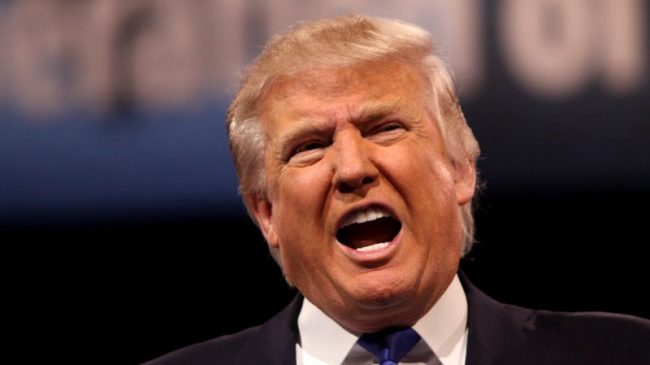President Trump’s calls for making massive investments in infrastructure projects across the country were a staple of his 2016 campaign. After taking office, his transportation team highlighted how public-private partnerships could help fund Trump’s proposed $1 trillion worth of infrastructure improvements.
But Trump has reportedly changed his mind. The Washington Post reports, “President Trump told lawmakers this week that he was abandoning a key element of his planned $1 trillion infrastructure package, complaining that certain partnerships between the private sector and federal government simply don’t work.”
President Trump is wrong about public-private partnerships and his reversal is bad news for Southern California and the rest of the country. America does have infrastructure woes, but the problems aren’t always insufficient spending. Far too much infrastructure “investment” goes to projects with high political value — like new rail projects that come with ribbon-cutting ceremonies — but offer low value for mobility and the economic opportunities that come with it.
Sound infrastructure investments that make it easier for people to get to work, deliver goods, start businesses and make our economy more productive are the real need.
And that’s where private investment can make a real difference. Private investors won’t fund “bridges to nowhere.” They seek out projects where user revenue streams can provide a long-term return on investment. In Southern California, adding express toll lanes to congested freeways and closing gaps in our freeway system via tunnels are the types of infrastructure projects local and state governments cannot afford, but private investors would love to be a part of.
All over the world airports, seaports and toll roads are attracting billions of dollars in private capital investment. Private investors finance, build, and operate them and guarantee the maintenance for the life of the long-term agreement.
Over the past decade, global infrastructure funds have raised an estimated $350 billion for equity investment in public-purpose infrastructure. California’s, and America’s, largest public pension fund, CalPERS, recently invested in London Gatwick Airport. CalPERS probably would have preferred to invest in John Wayne Airport or Los Angeles International Airport, but that wasn’t an option.
California’s airports and seaports need billions of dollars’ worth of improvements. Much of the Interstate highway system needs to be rebuilt and modernized, especially in urban Southern California, where traffic congestion drains productivity from the region. These types of projects are prime candidates for long-term public-private partnerships that pension funds and infrastructure funds are eager to invest in.
One idea, long championed by Rep. John Delaney, D-Md., that might appeal to California’s congressional delegation, is to dedicate at least a portion of repatriated tax revenue to the federal spending portion of the infrastructure program. To incentivize cities and states to designate specific facilities like the planned I-405 tunnel in the Sepulveda Pass and a tunnel between Irvine and the Corona Freeway in Riverside County for long-term public-private partnerships, the federal government could provide start-up grants and expand existing federal credit programs such as tax-exempt Private Activity Bonds and Transportation Infrastructure Finance and Innovation Act loans.
With all levels of government facing long-term debt and deficit troubles, the future of infrastructure financing, especially for aviation and highway projects in Southern California, is going to be private investment.
Public-private partnerships can be used to build and operate many major infrastructure projects state and local governments simply can’t afford. And this shift will encourage greater reliance on user fees instead of taxes so that only the users of new highways or airport terminals pay for them.
If President Trump wants to deliver on his promised $1 trillion to be invested in American infrastructure, he’s going to have to re-embrace public-private partnerships as the best, and in many cases only, way to come up with that money.

